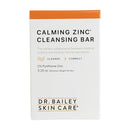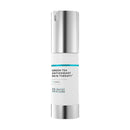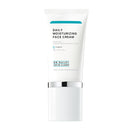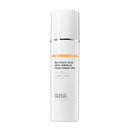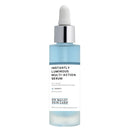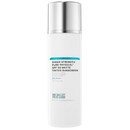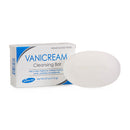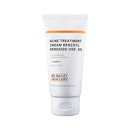Can You Get a Chemical Burn From Essential Oils?

Yes, unfortunately you can. Safe skin care is not really all that simple. As a dermatologist, I’ve seen many patients have mishaps with natural products that seem so wonderful. This is why I am picky; I recommend almost only hypoallergenic products.
Chemical Burn From Essential Oils
I bring this up because of a recent horrible blistering skin ‘burn’ story from essential oils online.
Elise Nguyen posted her experience on Facebook of some lovely oils made by doTERRA. She applied them to her wrist and neck before a hot yoga class. After the class, she went to a tanning bed (we know I would like to change her mind on that) to prep for a vacation. The next day, she noticed irritation where she had put the oils. She thought it was just a bad reaction to new laundry detergent. Then her skin got really bad.
"Over the next couple of days, I developed nasty blisters due to a chemical burn."
Her first photos on Facebook were captured by a blog called Scary Mommy. Click the link to see her burns. They are classic phytophoto burns; I have seen these many times. I want to educate and warn readers on how to avoid this.
What happened to Elise is called a ‘phytophoto dermatitis’. ‘Phyto’ means natural plant compounds, and ‘photo’ means UV rays. The combination of certain natural plant compounds and UV rays cause a rash on the skin that is much like a burn. This is a phototoxic reaction. It is not an allergy, it is more like a sunburn. The redness and burning starts in a few hours after UV exposure, and gradually worsens.

Why Can Essential Oils Cause Burns and Discoloration When Exposed to UV Rays?
Natural oils contain compounds called furocoumarins are photosensitizers, meaning they intensely increase the skin’s sensitivity to UV light. When exposed to UVA rays (which are cancer-causing rays from the sun and tanning beds), the skin burns like never before. Many perfumes contained these ingredients, especially bergamont, the fragrant natural oil. This was outlawed in the US. Commercial perfumes are now less likely to cause sun sensitivity (though they might contain other ingredients we want to avoid – that is another post).
What is important to know is that other plants contain furocoumarins, including many used in essential oils. These include lime and all citrus, yarrow, dill, and fennel. Garden plants and weeds are also not exempt, including parsley, St. John’s wort, mustard, bergamont, wild and garden parsnip, wild and garden carrot, fig, cowslip, angelica etc.
This is the same reaction that occurs from "margarita burn". This is the burn and hyper-pigmentation seen in bartenders making margaritas in the sun -- same with that twist of lemon in your ice tea, or Dos XX beer in the sun. Citrus on your skin plus sun is a bad combo. Trust me!
 Back in my residency days, a baby ate a backyard lemon in the sun, and had burns on its face, tummy, and hands. Child protective services were called in, because the first non-dermatologic medical team thought the parents let the baby drink acid or lye! Photos were shocking. Aside from that, I mostly see citrus phytophoto on the back of the hands – thank goodness.
Back in my residency days, a baby ate a backyard lemon in the sun, and had burns on its face, tummy, and hands. Child protective services were called in, because the first non-dermatologic medical team thought the parents let the baby drink acid or lye! Photos were shocking. Aside from that, I mostly see citrus phytophoto on the back of the hands – thank goodness.
What are a Dermatologist's Recommendations for Using Essential Oils Safely?
Essential oils can cause more than sun sensitivity. They more commonly cause skin allergy called an allergic contact dermatitis. I don’t recommend applying them to skin. Here’s why:
Using essential oils in full strength is called ‘neat’. When neat oil is applied directly to skin, it is impossible to guarantee safety. The concentration of ingredients is simply too high, tempting allergy or even toxicity. You don’t want to become allergic, so treat essential oils with respect.
It is recommended to not formulate products containing essential oils with more than a 2% concentration.
Many natural skin care companies dilute the oils with other botanical ingredients to reduce concentration.
Oil Allergy
In addition to UV-induced phytophoto toxic reactions, there is the potential to develop an allergy. Allergy is an entirely different reaction than sun toxic burn. This will be a lifelong problem, preventing you from using an oil ever again. Allergy is when your immune system reacts against something. Your immune system pretty much stay allergic to the substance for life, with only rare exception.
The classic example of this type of allergy is poison oak or ivy. Lower concentration exposure is always less likely to incite allergic response, though not even that guarantees safety. It's definitely less likely to cause skin irritation. These 3 reactions (allergic, irritant and phototoxic) are why I recommend almost only hypoallergenic natural skin care products.
I also only recommend aromatherapy scent or perfume be placed on clothing or hair -- not skin. As a Northern California dermatologist, I have seen my share of troubles with essential oil adverse skin reactions. It’s just not worth it. If you love your essential oils, play it safe.
Use fragrance-free natural skin care without highly concentrated essential oil for your main skin care products. - Dermatologist Dr. Bailey
I recommend fragrance-free botanical products in natural formulations that don't have highly concentrated essential oils. I prefer products made from healing hypoallergenic botanicals. My patients and I value a natural lifestyle and I have created natural products crafted from organic botanicals that aim to keep us safe from burns and allergic reactions.
Naturally Hydrating Pore-Minimizing Facial Toner
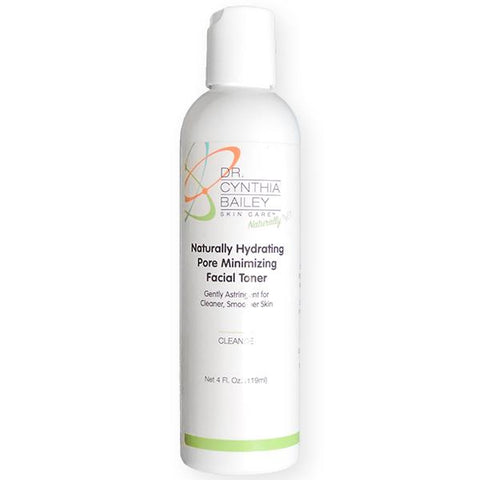
My goal is to use my clinical and scientific dermatologic precision to create natural skin care that's as safe as it is effective - and that's good for our entire family and our planet. - Dr. Bailey
You can still capture the benefits of your favorite essential oil by adding a few drops to your hair or clothing but keep it off of your skin.
What Other Plant Materials Cause Phytophoto Phototoxic Skin Reaction?
I listed the more common ones above. Typically phototoxic plants are in the families of Umbrelliferae, Rutacea, Compositae and Moraceae. Some of the offenders not listed above include:- Agrimony
- Atrillal
- Bavachi
- Buttercup
- Common rice
- Cowslip
- Gas plant
- Goose foot
- Zabon
- Masterwort
- Mokihana berry from Hawaii
What Can You Do If You Also Get A Phototoxic Reaction?
Prevention is best. When coming into contact with citrus or any of the plants listed above, wash your skin immediately with warm water and soap. Some of the compounds may have absorbed into your skin anyway, so keep away from the sun (and tanning bed rays!!!). Once the reaction burns, it is too late to stop it. You go into wound care.
Doctor's healing skin care to treat a chemical burn from essential oils
I always recommend that my patients with injured skin use hypoallergenic and gentle products to help their skin heal. They also need strict sun protection to help reduce the risk of hyperpigmentation from the burn.
I have my patients use my Naturally Best Bar Soap to cleanse their skin with tepid to cool water then apply my Natural Face and Body Lotion or Natural Face and Body Butter Cream.



All 3 of these products are hypoallergenic and gentle. Sun protection should be provided by clothing and sun avoidance until the skin heals.
A rash such as a chemical burn may ease with prescription cortisone cream. See a dermatologist, because this rash can scar and will definitely hyperpigment. That is what furocoumarines do.
- For my dermatologist’s sun protection products, click here.
- To see more photos of phytophoto toxic skin reactions, click here for Medscape.
The bottom line with using essential oil on your skin
Play it safe - even with natural skin care. Avoid high risk essential oils, even if they smell yummy. Keep your skin care hypoallergenic as much as possible.
To see my recommended NATURAL AND HYPOALLERGENIC skin care products click here.


